Horatio Chapple inquest: Svalbard polar bear risk 'is serious'
- Published

There are estimated to be up to 3,600 polar bears on the Svalbard archipelago
The inquest into the death of 17-year-old Horatio Chapple has highlighted the extreme dangers posed by polar bears in the Arctic. But what safety measures can be taken to protect against the creatures?
Everywhere you go on Svalbard the image of the polar bear is an iconic part of life.
At the airport - a single strip of tarmac high in the Arctic - a polar bear greeted me in the baggage hall while there was another rearing up 10 ft tall in the reception hall of my hotel.
Both may be stuffed but they make it worryingly clear just how massive these predators are.
For 17-year-old Horatio, from Salisbury in Wiltshire, it was an elderly 250kg bear that brought a tragic end to his adventure holiday on the Norwegian archipelago.
As I am driven by polar safety expert Jason Roberts out of the main settlement of Longyearbyen, he tells me that people are actually outnumbered by bears and that "you have to take the polar bear risk seriously".
Polar safety expert Jason Roberts: The rifle is ''the last line of defence''
That risk is underlined as we pass a road sign giving a warning about the killer animals "for the whole of Svalbard".
Mr Roberts explains that any time you leave a settlement the law requires you to have a rifle for self-defence.
The rugged land, midway between Norway and the North Pole, is favoured by adventurous explorers. And for the sake of safety the local authority insist on signing-off on any camping trip.
After driving for about 20 minutes - past abandoned coal mines, sled dog kennels and a wooden shack or two - Mr Roberts pulls off the dusty road to set up a camp and talk me through the equipment.
From the back of his 4x4 he pulls out flares, explosives and guns - a small arsenal of polar predator protection devices. He also wears a utility belt with high-powered hand gun and pepper spray so that they are within easy reach.
The location we set up in has a wide desolate view - a must for defence.

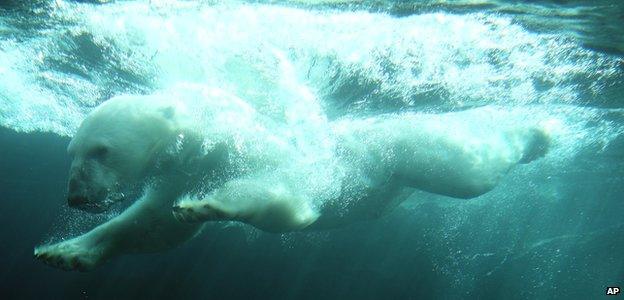
One of the world's largest predators
Population estimation: 1,900-3,600 individuals
A big male may weigh up to 800kg
Females are smaller than males, having half their weight
Staple food is ring seal and bearded seal
They put on weight in autumn and are lean in summer

First, he lays out the same trip wire system used by the British School Exploring Society (BSES) expedition on which Horatio died. It is a surprisingly simple line of fishing wire which is tied to trip explosives that surround our makeshift camp.
He tells me that it is "the first line of a warning" but explains that "most likely the bear will not be scared by the explosion" and that they don't always go off.
This is starkly shown when we repeatedly trip the wire for filming and the explosive does not fire.
I am shown the small signal pens the students had but also the much more powerful flare pistol that Mr Roberts relies on for protection as he says signal pens "have very little effect".
The "last line of defence" is a Mauser 98 bolt-action rifle - these were standard German issue during World War One.
It is old, heavy and single shot but its reliability in frozen conditions means it is the main rifle used for safety on Svalbard.
The same type of rifle was used by BSES and I am shown the different safety-catch stages. In one setting the trigger can be pulled without the weapon firing. The position of the safety catch during the polar bear attack may have been the reason why the rifle did not fire.
After four hours we pack up for the return to Longyearbyen and I have a clearer understanding of just how important safety equipment, knowledge and preparation are.
We may not have seen any bears and it would be an adventure to camp out under the endless light of an Arctic summer, but I must admit to some relief that the security and comfort of my hotel awaited.
- Published18 July 2014
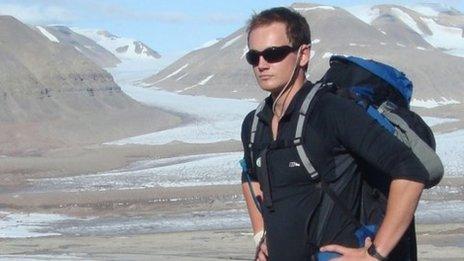
- Published18 July 2014

- Published18 July 2014

- Published11 July 2014

- Published10 July 2014
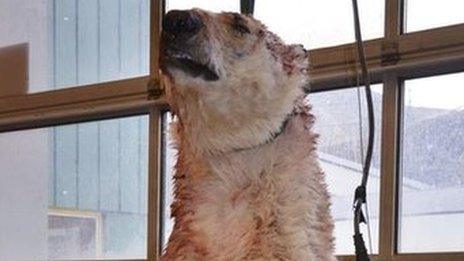
- Published9 July 2014

- Published8 July 2014

- Published7 July 2014

- Published2 March 2012
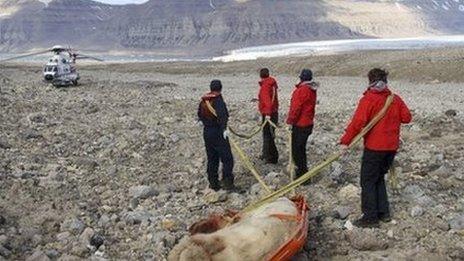
- Published26 August 2011

- Published9 August 2011
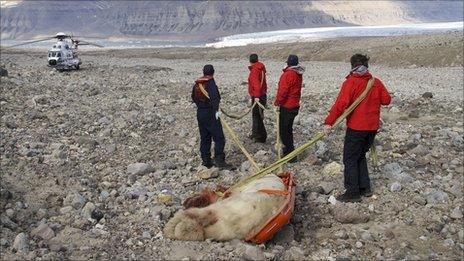
- Published5 August 2011
